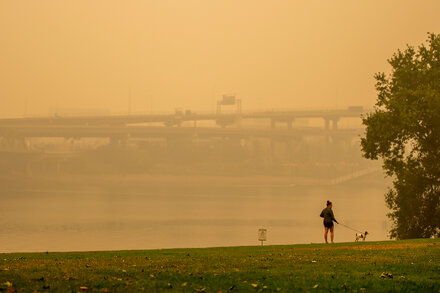Environmental pollution poses an increasing threat to the health of our companion animals, from the air they breathe to the surfaces they touch. Understanding these risks and implementing protective measures is crucial for every pet owner.

As environmental concerns escalate globally, the impact of pollution extends significantly to the health and well-being of companion animals. From the air they breathe to the water they drink and the surfaces they touch, pets are increasingly exposed to a variety of contaminants that can affect their long-term health. Understanding these risks and implementing preventative measures is crucial for pet owners.
Understanding the Risks
Pets, often smaller in stature and with faster metabolisms than humans, can be particularly vulnerable to environmental pollutants. Their proximity to the ground means they are more likely to inhale heavier airborne particles and come into direct contact with chemical residues on surfaces. Air pollution, including particulate matter (PM2.5) from vehicle exhaust and industrial activity, as well as ground-level ozone, can exacerbate respiratory conditions like asthma and bronchitis in animals.
“Many pet owners might not immediately connect their pet’s lethargy, coughing, or skin issues to environmental factors,” says Dr. Emily Carter, a veterinary toxicologist. “It’s crucial to be aware of your local environment and observe any changes in your pet’s behavior or health, as these could be signs of exposure.”
Chemical pollutants commonly found in pesticides, household cleaning supplies, and even certain pet products can lead to a range of issues, from immediate skin irritations and gastrointestinal upset to more severe, long-term health problems affecting organ function or leading to chronic diseases.
Safeguarding Indoor Environments
Given that pets spend a substantial portion of their lives indoors, the quality of their home environment is paramount. Pet owners can implement several strategies to reduce indoor pollution:
- Air Filtration: Utilize high-efficiency particulate air (HEPA) filters in vacuum cleaners and HVAC systems to trap airborne allergens, dust, and pollutants. Regular filter replacement is essential for optimal performance.
- Mindful Cleaning: Many conventional household cleaners contain volatile organic compounds (VOCs) that can be harmful. Opt for natural, pet-safe cleaning products, or simple solutions like vinegar and baking soda. Always ensure pets are kept away from freshly cleaned surfaces until they are dry and the area is well-ventilated.
- Ventilation: On days when outdoor air quality is good, opening windows can help circulate fresh air and reduce the buildup of indoor pollutants.
- Avoid Scented Products: Air fresheners, scented candles, and essential oil diffusers can release particles and chemicals that are irritating or toxic to pets, particularly those with respiratory sensitivities.
“Our homes can often trap pollutants, creating environments that are sometimes more hazardous than the outdoors, especially for pets who spend most of their time there,” explains Maria Rodriguez, an Environmental Health Specialist. “Simple changes like improving ventilation and choosing eco-friendly products can make a significant difference in a pet’s daily exposure.”
Navigating the Outdoors Safely
The outdoor environment offers enrichment but also presents unique pollution challenges:





